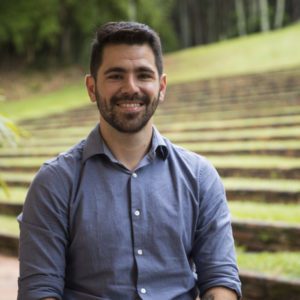Pedro Val
Assistant Professor
Tectonic Geomorphology
Science Building, Room E-204
Phone: 718-997-3324
Pval@qc.cuny.edu
Research Interests
I specialize in Tectonic Geomorphology and in using cosmogenic isotopes (in-situ and meteoric) to build inventories (primarily 10Be, 26Al, 14C, and 21Ne) that serve as paleo and modern proxies of erosion rates as well as chronological constraints for dating sedimentary deposits and landforms from hundreds to millions of years. The foci my research are the interactions between tectonic, climatic, and surface processes in space and time, from source to sink. I use the rock record and the shape of topography to study the individual contributions of tectonics and climate to the evolution of landscapes (i.e. river reorganization, mountain growth, orogen evolution). I use geochemical and geochronological signals preserved in detrital records (i.e. cosmogenic nuclides and detrital zircons) to constrain the mass balance involved in mountain ranges with a main focus on the Cordilleran mountains as well as in decaying ones too.
I also have a special interest in the evolution of landscapes and life in the Amazon Region. I investigate the factors (i.e. intraplate tectonics, rock type, and paleoclimate changes) that govern the processes of landscape change in the Amazon as well as the timing of major changes in its topographic and river network structure. To that end, I am a leading author of the Geology Section of the Science Panel for the Amazon which was created under the auspices of the Social Developments Solutions Network. I am currently interested in the role that rock type plays in reconfiguring drainage networks over tens of millions of years. Understanding how networks get reshaped over time is crucial for constraining the causes of the unparalleled biodiversity that characterizes the Amazon Region. Together with colleagues in the biology field, I also investigate how landscape changes in the Amazon are recorded in the DNA of freshwater fish.
Teaching Philosophy
When we are out in the field, the one thing we all marvel at is the scenery. We are curious about the natural world through our eyes. I believe we can all grasp the importance of understanding how Earth works by linking what we see with our own eyes. Earth Sciences are a medley of disciplines with ample room to teach topics that are tangible to students’ lives, and which are relatable to what they see with their own eyes. I believe this is a doorway to teach investigative and quantitative methods motivated by exciting scientific questions, stimulating students to tackle topics that are truly relevant and at the forefront of science and lead our way to a sustainable environment. Excitingly, rich and high-quality datasets are just a few clicks away. In the courses I teach, I develop engaging, learner-centered classes which enhance student learning by teaching students to gather, assess, and apply analysis of real and synthetic data. I believe my approach to teaching equips students with transferable skills to bridge the gaps between disciplines. This fluency and versatility are two qualities I foster in students.


